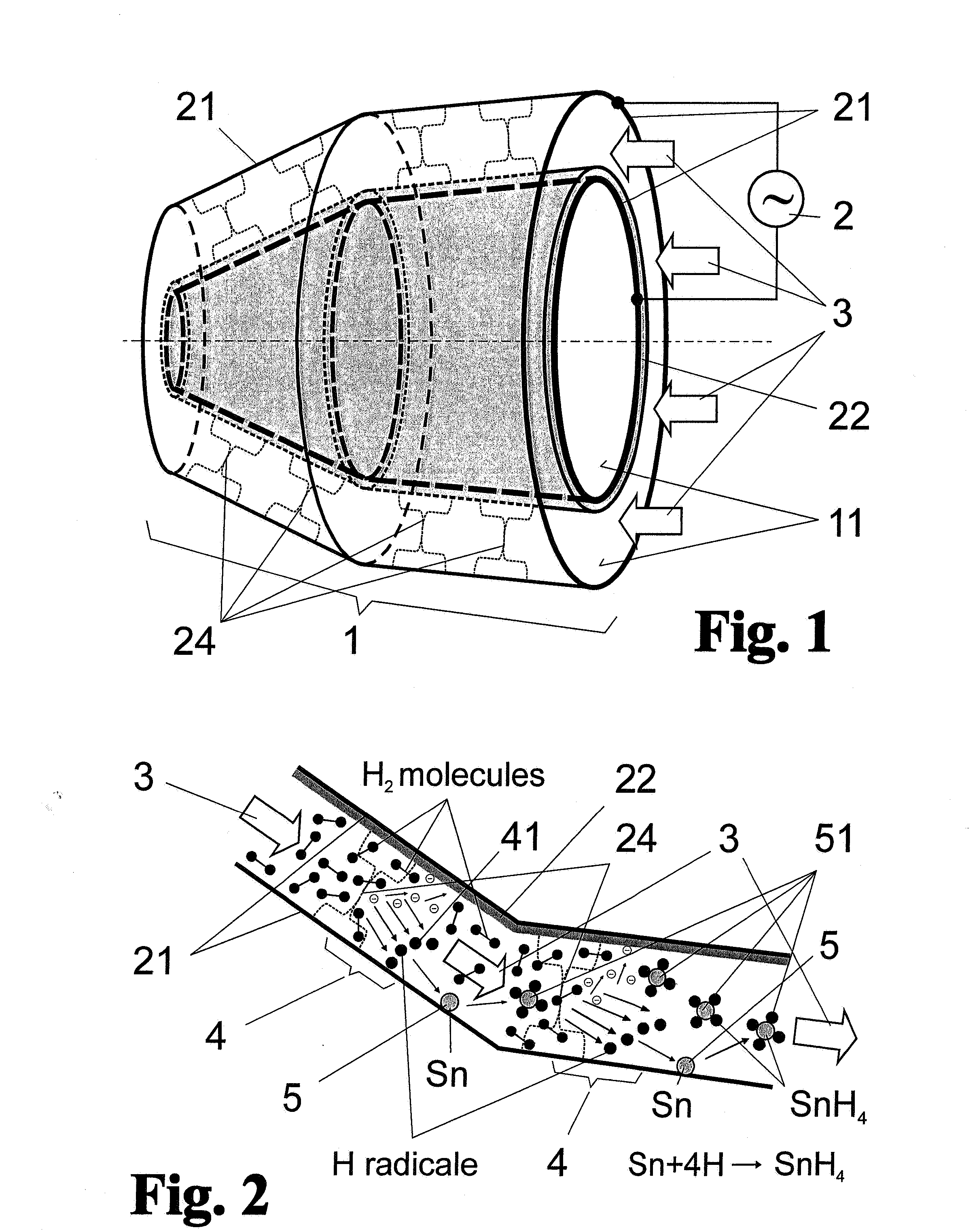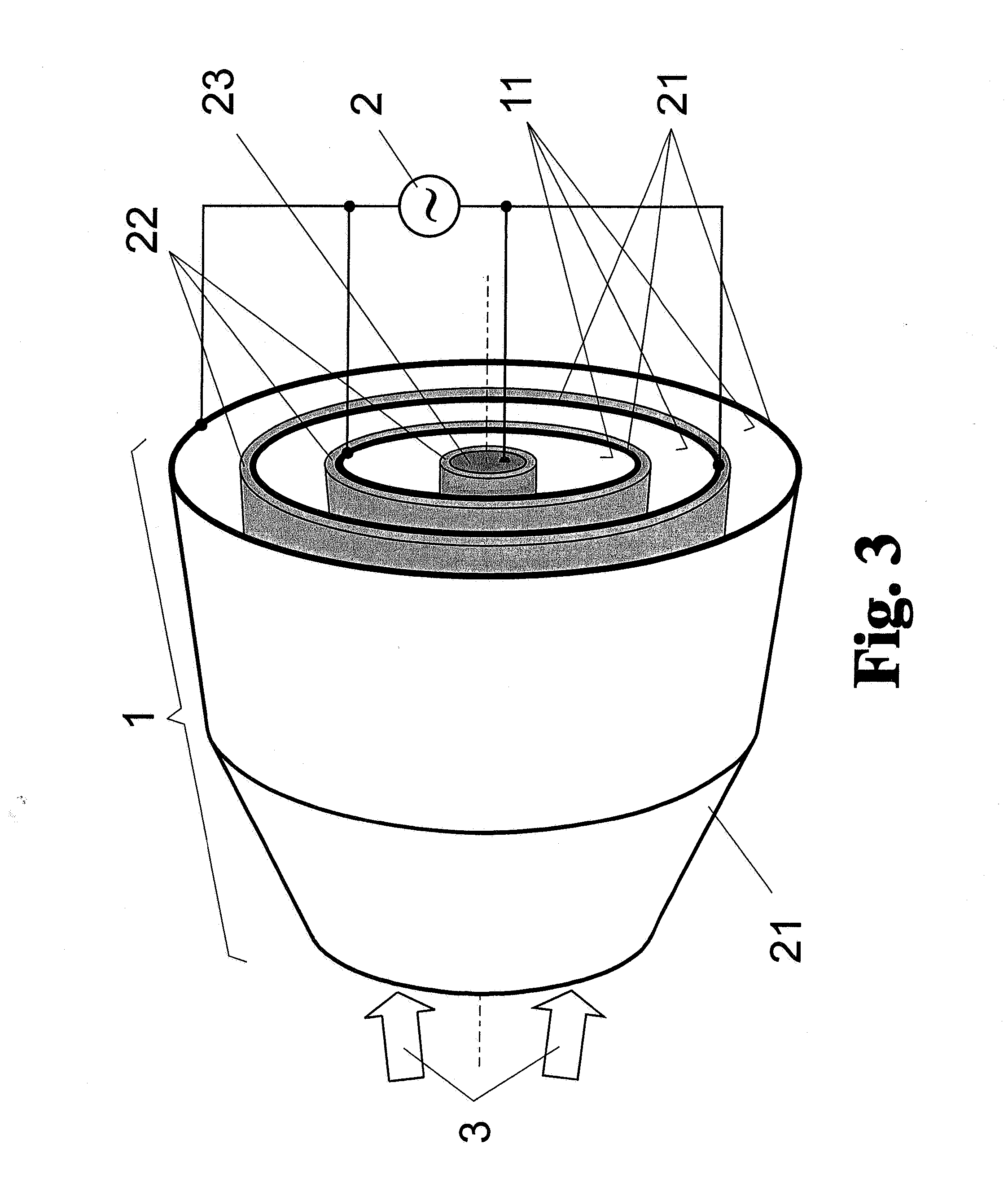Method and arrangement for cleaning optical surfaces in plasma-based radiation sources
- Summary
- Abstract
- Description
- Claims
- Application Information
AI Technical Summary
Benefits of technology
Problems solved by technology
Method used
Image
Examples
Embodiment Construction
[0044]As is shown schematically in FIG. 1 for a nested, grazing-incidence collector 1, an arrangement for cleaning the optical surfaces of reflection optics which are contaminated in a lithographic exposure device by debris emitted by a hot plasma in a plasma-based EUV radiation source is basically formed of two rotationally symmetric, collinearly arranged mirror surfaces 11 which form metal surface electrodes 21 at the same time and are connected, as such, to an AC voltage source 2. A dielectric barrier layer 22 which is arranged to the rear of the mirror surface 11—because the mirror surfaces 11 to be kept clear are on the inner side of the rotationally symmetric surface electrodes 21—is arranged between the two surface electrodes 21. Accordingly, a dielectrically impeded discharge is possible between the two surface electrodes 21 when voltage is applied.
[0045]The dielectrically impeded discharge, which was already described by Werner von Siemens in 1857 as a “silent electrical di...
PUM
| Property | Measurement | Unit |
|---|---|---|
| Thickness | aaaaa | aaaaa |
| Electric potential / voltage | aaaaa | aaaaa |
| Electric potential / voltage | aaaaa | aaaaa |
Abstract
Description
Claims
Application Information
 Login to View More
Login to View More - R&D
- Intellectual Property
- Life Sciences
- Materials
- Tech Scout
- Unparalleled Data Quality
- Higher Quality Content
- 60% Fewer Hallucinations
Browse by: Latest US Patents, China's latest patents, Technical Efficacy Thesaurus, Application Domain, Technology Topic, Popular Technical Reports.
© 2025 PatSnap. All rights reserved.Legal|Privacy policy|Modern Slavery Act Transparency Statement|Sitemap|About US| Contact US: help@patsnap.com



